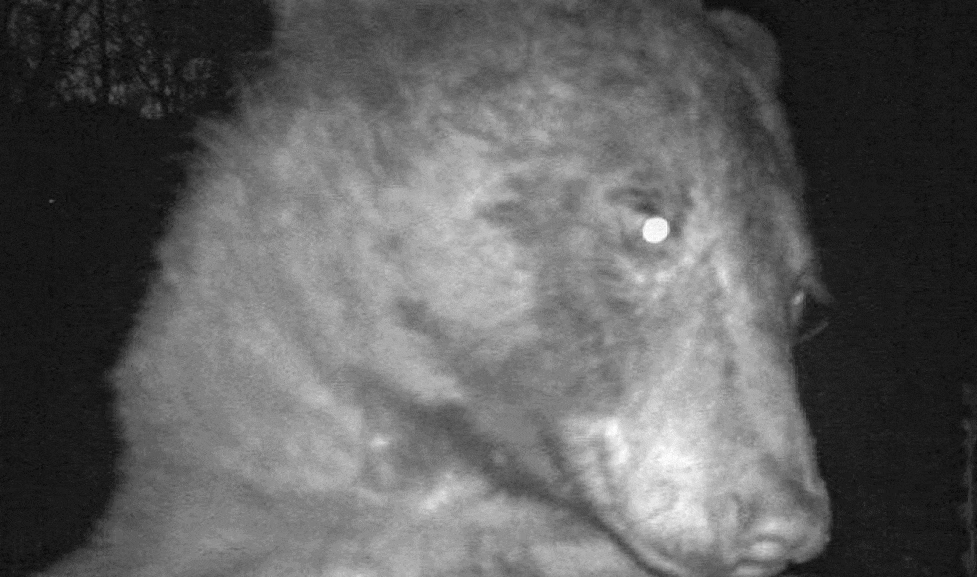Ecology
Italian Divers Revive Centuries-Old Tradition to Help Save European Perch
Nurseries built from bundles of tree branches may help conserve the freshwater fish in the age of climate change
Huge Cicada Broods Have Ripple Effects on Birds, Caterpillars and Trees
When Brood X emerged in 2021, scientists measured how the influx of billions of insects affected the ecosystem near Washington, D.C.
New Synthetic Horseshoe Crab Blood Could Mean Pharma Won't Bleed the Species Dry
The “living fossils” have been vital for testing intravenous drugs, but a few large pharmaceutical companies are using a lab-made compound instead
How Roads Have Transformed the Natural World
A brief history of road ecology, the scientific discipline that is helping us understand our impact on the environment and how to diminish it
Efforts to Bring Back the Caribbean Reef Shark May Become a Conservation Success Story
The endangered creature is a target for fishing off the coast of the Bahamas—and a magnet for ecotourists who just might save it
How Conservation Paleobiology Serves as a Guide for Restoring Ecosystems
Researchers use historic remnants like antlers, shells, teeth and pollen to learn how natural communities once worked
Will Maui's Beloved 150-Year-Old Banyan Tree Survive the Scorching Wildfires?
Amidst the devastation of Lahaina, a coastal town in Maui, the tree is burned but still standing
These Long, Skinny Fish Hide Behind Bigger Fish to Sneak Up on Their Prey
Scientists made 3D-printed models of fish and tested them in the ocean to study this clever hunting strategy
These Surfers Want to Restore Temperate Rainforests to Ireland
In the rainy mountains along the country’s west coast, a movement has begun to bring back an ecosystem that has been gone for centuries
Pollination From Honeybees Could Make Plants Less Fit to Survive and Reproduce
Plants visited by honeybees rather than native bees may become more inbred, a new study suggests
See the New Tallest Tree in Asia, a 335-Foot Cypress
Easily taller than the Statue of Liberty, the behemoth is likely the second-tallest known tree in the world
Why Have Alaskans Been Photographing This Volkswagen Beetle-Sized Boulder for 33 Years?
A scientist began taking shots after the Exxon Valdez oil spill, and volunteers have since taken over
How the U.S. Almost Became a Nation of Hippo Ranchers
In 1910, a failed House bill sought to increase the availability of low-cost meat by importing hippopotamuses that would be killed to make "lake cow bacon"
On This Disputed River, Progress May Mean a Return to the Past
Winding through British Columbia and Washington, the Skagit has a history that reflects competing conceptions of advancement
The Illuminating Science Behind Fireflies
A dedicated ornithologist with a passion for lightning bugs scours bogs and beaches to discover previously unknown species
Why Male California Sea Lions Are Getting Bigger
The “raccoons of the sea” have varied diets, allowing them to grow large to compete for mates
As Glaciers Retreat, New Streams Offer Homes for Salmon
After the waterways form, insects move in, alders and willows spring up, and spawning fish arrive in thousands
This Black Bear Took Hundreds of ‘Selfies’ on a Wildlife Camera
Of the 580 images captured by the camera in November, about 400 were of the bear
Smithsonian Scholars Pick Their Favorite Books of 2022
This wide-ranging list offers context for our rapidly changing world
Getting Up Close to the Bears of Alaska's Lake Clark National Park
The high density of brown bears in the protected area makes it an ideal spot for viewing and research
Page 1 of 27
:focal(1000x667:1001x668)/https://tf-cmsv2-smithsonianmag-media.s3.amazonaws.com/filer_public/24/78/2478c6c4-4f3a-4920-b3a2-f8dbc04c0654/european_perch_3_mattia_nocciola.jpg)
:focal(2279x1519:2280x1520)/https://tf-cmsv2-smithsonianmag-media.s3.amazonaws.com/filer_public/c7/5e/c75e1bf0-b0d5-4fb4-ac2d-b6a435551891/gettyimages-1321571330.jpg)
:focal(512x349:513x350)/https://tf-cmsv2-smithsonianmag-media.s3.amazonaws.com/filer_public/48/11/4811c219-7a18-485d-8d48-232104b8460d/gettyimages-1241981966.jpg)
:focal(800x602:801x603)/https://tf-cmsv2-smithsonianmag-media.s3.amazonaws.com/filer_public/32/35/32358e9e-86b9-4df3-84c8-b248df5cd6a5/gettyimages-155790644_web.jpg)
:focal(2329x1752:2330x1753)/https://tf-cmsv2-smithsonianmag-media.s3.amazonaws.com/filer_public/3e/a1/3ea13dd9-f9c5-4536-8c03-4f7e5608cc9b/20220608-500_9249.jpg)
:focal(800x602:801x603)/https://tf-cmsv2-smithsonianmag-media.s3.amazonaws.com/filer_public/b1/87/b1878501-488f-4184-9a6b-ea0220d95b44/46382847054_2291ad6829_3k_web.jpg)
:focal(3884x2626:3885x2627)/https://tf-cmsv2-smithsonianmag-media.s3.amazonaws.com/filer_public/21/89/21899042-4f39-4694-9270-f6fd4bd9cf43/banyan_2.jpg)
:focal(2600x1758:2601x1759)/https://tf-cmsv2-smithsonianmag-media.s3.amazonaws.com/filer_public/19/bd/19bd7deb-c0aa-44b1-8e5f-9386d717d8e6/gettyimages-146140976.jpg)
:focal(800x602:801x603)/https://tf-cmsv2-smithsonianmag-media.s3.amazonaws.com/filer_public/83/c5/83c5f2a9-b5b5-4f0e-bf19-d36f14e60fd0/header-ireland-reforestation_web.jpg)
:focal(1057x715:1058x716)/https://tf-cmsv2-smithsonianmag-media.s3.amazonaws.com/filer_public/8b/ac/8bac077b-ca38-4268-a48e-9bf74c501314/gettyimages-146673864.jpg)
:focal(2432x1830:2433x1831)/https://tf-cmsv2-smithsonianmag-media.s3.amazonaws.com/filer_public/f7/1e/f71efbab-555b-4ad0-82c1-d5c810ed6959/u6475a70ff1a2c.png)
:focal(800x602:801x603)/https://tf-cmsv2-smithsonianmag-media.s3.amazonaws.com/filer_public/13/5f/135f34f8-6729-4833-a9a0-96af7ea1bdf5/header-uncropped_web.jpg)
:focal(700x407:701x408)/https://tf-cmsv2-smithsonianmag-media.s3.amazonaws.com/filer_public/3d/2a/3d2a1502-c0dd-4f22-a5e6-f256ce8df7af/hippo.jpg)
:focal(2144x1429:2145x1430)/https://tf-cmsv2-smithsonianmag-media.s3.amazonaws.com/filer_public/23/f4/23f418b6-bd1a-4294-87dc-bd734c66935c/gettyimages-124479331.jpg)
:focal(1800x1354:1801x1355)/https://tf-cmsv2-smithsonianmag-media.s3.amazonaws.com/filer_public/3c/22/3c22dad8-e58e-4c72-96c3-30d06c6c086c/opener_dsc4153_hi_res.jpg)
:focal(1024x770:1025x771)/https://tf-cmsv2-smithsonianmag-media.s3.amazonaws.com/filer_public/91/a5/91a5de09-f063-4650-ae79-cba021791908/5077878877_e896a5c787_k.jpg)
:focal(800x602:801x603)/https://tf-cmsv2-smithsonianmag-media.s3.amazonaws.com/filer_public/e8/5d/e85d1fff-37c9-4585-88da-b5a831308ef5/main_img_1748-cc_web.jpg)

:focal(800x602:801x603)/https://tf-cmsv2-smithsonianmag-media.s3.amazonaws.com/filer_public/b7/bd/b7bdaee0-a3ef-4368-9d4f-f6fc81fe13e0/curatorspicks-booklist-v3.jpg)
:focal(2341x1572:2342x1573)/https://tf-cmsv2-smithsonianmag-media.s3.amazonaws.com/filer_public/2a/43/2a4379d4-fd6a-4d51-9b43-a8a590c6518a/court_whelan_08a1977.jpg)